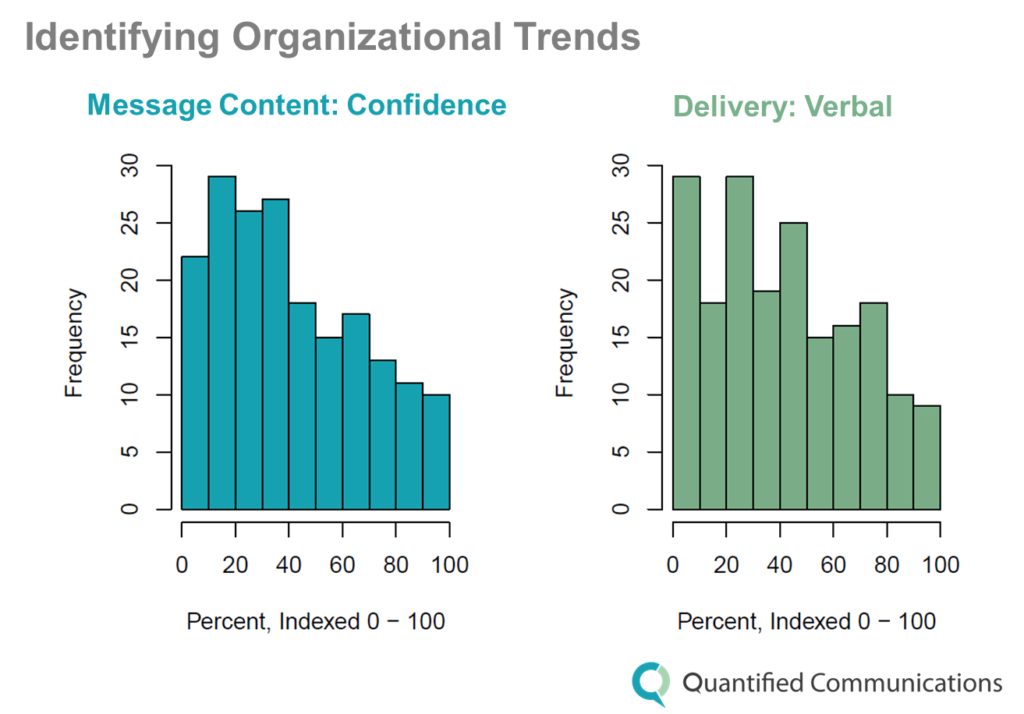3 Ways Behavioral Analytics Will Transform Learning and Development

Research has found the overwhelming majority of executives and learning and development professionals, not to mention employees, value ongoing professional development. And topping the list of priorities? Communication. Up to 80 percent of professional activity is grounded in communication, and those skills drive success across every department and initiative.
And yet, organizations are struggling to find personalized, effective training opportunities for employees. In fact, according to LinkedIn’s 2017 Workplace Learning Report, fewer than 25 percent of learning and development professionals are willing to recommend their own programs to peers.
The biggest obstacles organizations are facing in this area? Resources. LinkedIn found the top three challenges in L&D are limited budgets, small teams, and persuading employees to make time for training.
When it comes to improving communication skills across the company, L&D leaders are desperately seeking efficient, cost-effective solutions that can drive personalized improvement for the entire team.
Sound like a tall order?
A new, communication-oriented approach to behavioral analytics combines human expertise with machine efficiency to help us analyze and synthesize information in quantities we couldn’t dream of handling on our own. This eliminates the inefficiencies and subjectivity of traditional communication evaluation methods like focus groups or manual coding.
Instead, it lets us synthesize the feedback and benchmarking power of millions of responses to millions of different types of communication.
So what does this mean for your organization?
1. Evaluate Every Team Member, Every Time
You may have a sense of the problem — maybe your CEO is an interviewing powerhouse but the CFO struggles, or some of your managers are better team leaders than others. But if you get right down to it, you’re not sure why employee morale is low or which high potentials are best equipped to lead teams or represent the company.
You could bring in focus groups, consultants, individual coaches, or general communication workshops to solve the problem. But if time is of the essence, budget is tight, or needs differ from employee to employee, these traditional solutions may not be effective.
But analytics can help, enabling organizations to evaluate the communication skills of any number of employees quickly and objectively, returning data-driven insights on the team’s strengths and weaknesses.

2. Unlimited, Personalized Feedback
Communication-focused behavioral analytics offers more than just a high-level glimpse into the team’s performance. On top of the aggregate data, it returns in-depth insights into each participant’s skills. What are their strengths? What are their biggest development opportunities? How do they compare to their peers? What about their counterparts at other organizations?
The majority of traditional behavioral analytics methods are grounded in self-assessment, which research has found to be highly inaccurate for any number of reasons — high performers tend to rate themselves modestly while low-performers often inflate their own contributions, and men tend to rate themselves much higher than women do.
Communication-oriented behavioral analytics offers an objective approach to understanding each team member’s unique skills and weaknesses.
Now you can accurately identify your best-performing high potentials and your struggling team members — and help them all reach world-class levels.
3. Improvement Plans Tailored to Your Needs
All these insights, all this data, powers the one thing your organization’s leaders and future leaders need most — personalized, lasting improvement.
These analyses lay the framework for effective, data-driven coaching sessions and custom action plans designed to meet the team’s most pressing communication needs. And, with the ability to re-evaluate participants on a regular basis, you can adjust game plans and strategies as your people improve.
![]()
Innovations in fields like machine learning, intelligence amplification, and natural language processing are already impacting our lives in so many ways, creating experiences that are both more personalized and more efficient than ever before. These developments are poised to transform corporate learning, too.
Talent professionals will no longer have to rely on subjective programming that eats away budget, wastes employee time, and yields few (if any) measurable results. Thanks to technological advancements in the realm of behavioral analytics, organizations now have access to efficient, objective opportunities to evaluate their people and provide measurable, lasting improvement.